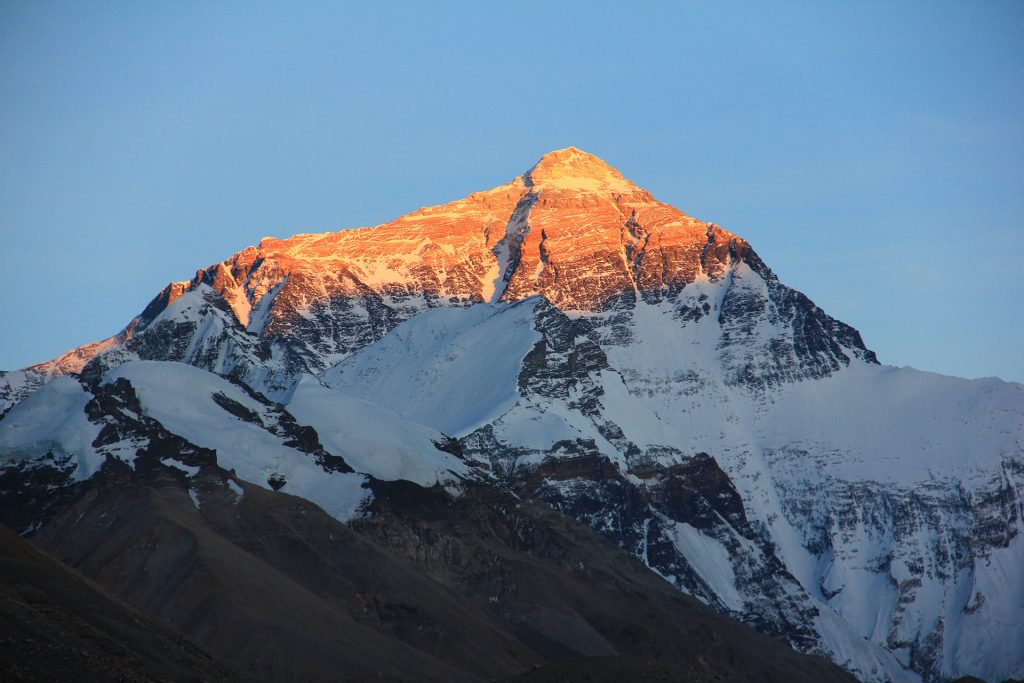
Mount Everest, or Mount Qomolangma (Chinese name: 珠穆朗玛峰), meaning “Goddess” in Tibetan is the highest mountain on earth with an altitude of 8, 844 metres. Mt. Qomolangma known to the western world as Mt. Everest stands at the south of Tingri county in southern
Tibet, at the border of the central Himalayas between China and Nepal, capped with accumulated eternal snow. Its snow peak sends out silver radiance year after year. Its waist is hidden in the clouds. The optimum weather to visit Mt. Everest is from April to June, a golden period for mountaineers. Each year, a great number of brave robust mountaineers come from all over the world to visit and climb Mt. Everest, hope to fulfill a life-long dream by climbing onto and looking over from the world’s highest peak.
Mount Everest is in fact a part of the Himalaya Mountain. The Himalaya mountain is situated near the border with Tibet. Mt Everest got its name after the person (Sir George Everest) that first tried to locate the exact position of the peak. Until then, it was named simply “Peak XV”. You should know that there are four available camps, situated at heights of 6,100m, 6,500m, 7,400m and 8,000m and of course the summit, at 8850m. Here, at the summit, you can expect temperatures of minus 100 degrees Fahrenheit, but if you have luck the temperature can reach also minus 15 degrees Fahrenheit. But the real problem for the climbers is not the low temperature, but the reduced level of oxygen of the air, because of the high altitude. The climbers need to go through a process called acclimatization. They have a camp at the base of the mount. They climb for some hundred feet and then they go down again, to rest. The idea is to get used better and safer with the low level of oxygen and then get fresh oxygen. And also every time they go down again, they have the chance to get some proper sleep and eat food.
It is importing that climbers know there are many dangers that can affect them. At the summit the oxygen level is so low that it is believed that it is only 1 per 3 of the level near the sea. The wind is also very powerful, striking with almost 118 miles/hour. This powerful wind is locally called the “Jet Stream” and many times he is the one that don’t allow the climbers to reach the summit.
